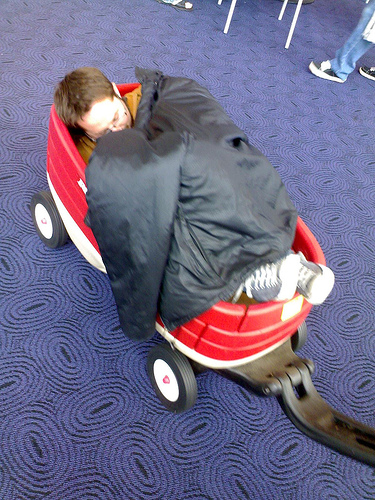Check out our Top Rewards Cards to boost your points earning and travel more!
Some boast they are not affected (American executives), others never tire of moaning about it (the rest of humanity), jet lag is a big downer of international travel. There are many tips out there and all agree on the critical role of exposure to sunlight to aid in adjustment. For those interested in the why as much as the what, Oxford Professor Russell Foster penned a superb piece on sleep and Circadian rhythm, in the Guardian. There is a companion audio interview on Guardian’s Science Weekly podcast.
On the potency of jet leg, Professor Foster explains:
We used to think that our 24-hour biological rhythm was driven exclusively by a cluster of 50,000 neurons known as the suprachiasmatic nucleus (SCN), which sits within the hypothalamus at the base of the brain. But isolated cells from almost any organ of the body also express clock genes and proteins. We now appreciate that the SCN acts as a master pacemaker, coordinating the activity of all cellular clocks in a manner that has been likened to the conductor of an orchestra regulating the timing of the multiple and varied components of the ensemble.
In the absence of the SCN, the individual cellular clocks of the organ systems drift apart and coordinated circadian rhythms collapse – a state know as internal desynchronisation. This, by the way, is the main reason why we feel so awful as a result of jet-lag. All the different organ systems including the brain, liver, gut and muscles are all working to a slightly different time. Only when internal time has been re-aligned can we function normally once more.
In the audio interview he explains that daylight is so powerful that night shift workers never fully adjust. Only in a Harvard test where subjects were prevented from any exposure to daylight were they able to begin to shift to a night cycle. This effect is so strong it even in present in animals totally visually blind:
Remarkably, even in animals and people in whom the rods and cones used for vision have been completely destroyed and who are otherwise totally visually blind, the pRGCs can still detect light to shift the circadian clock.
Knowing this won’t make you feel any better but sounds authoritative next time on the road that you are told you don’t know your head from your hoof.
Check Out Our: Top Rewards Cards ¦ Newsletter ¦ Twitter ¦ Facebook ¦ Instagram

